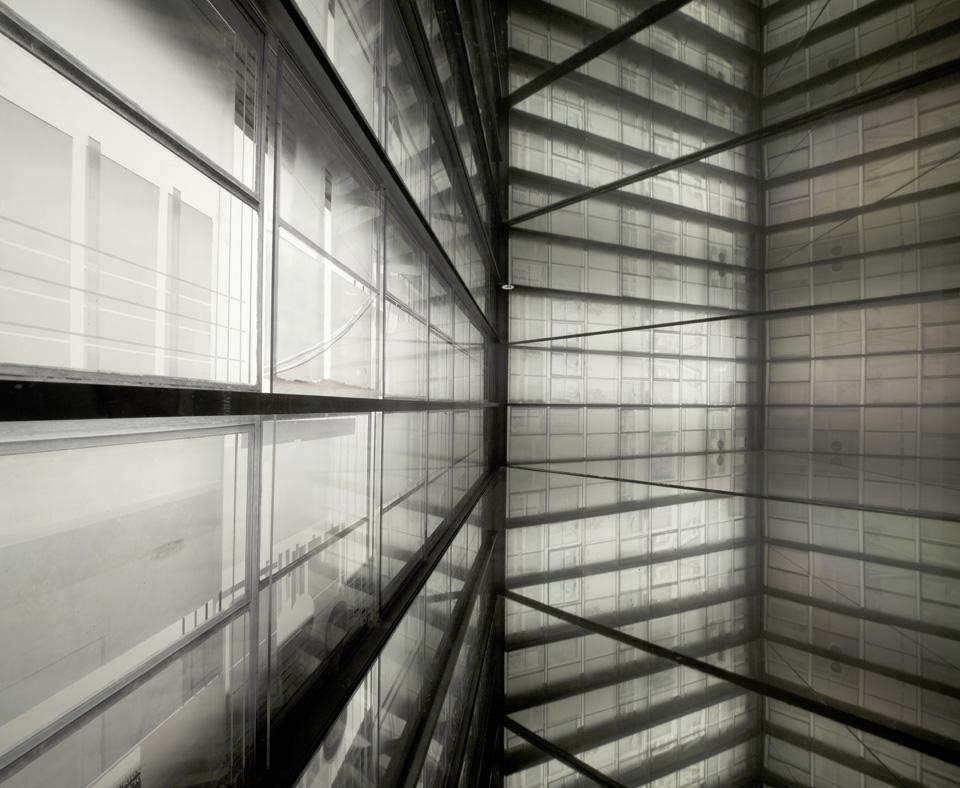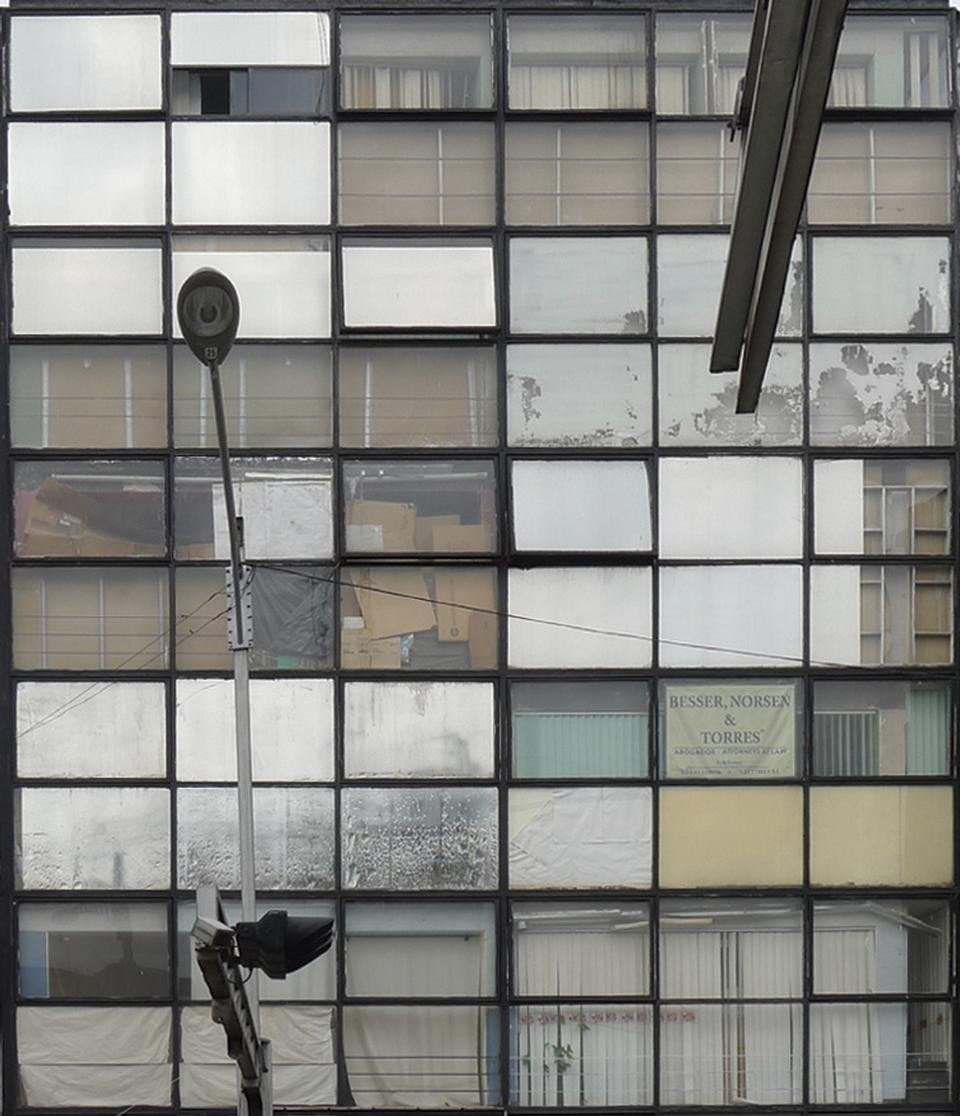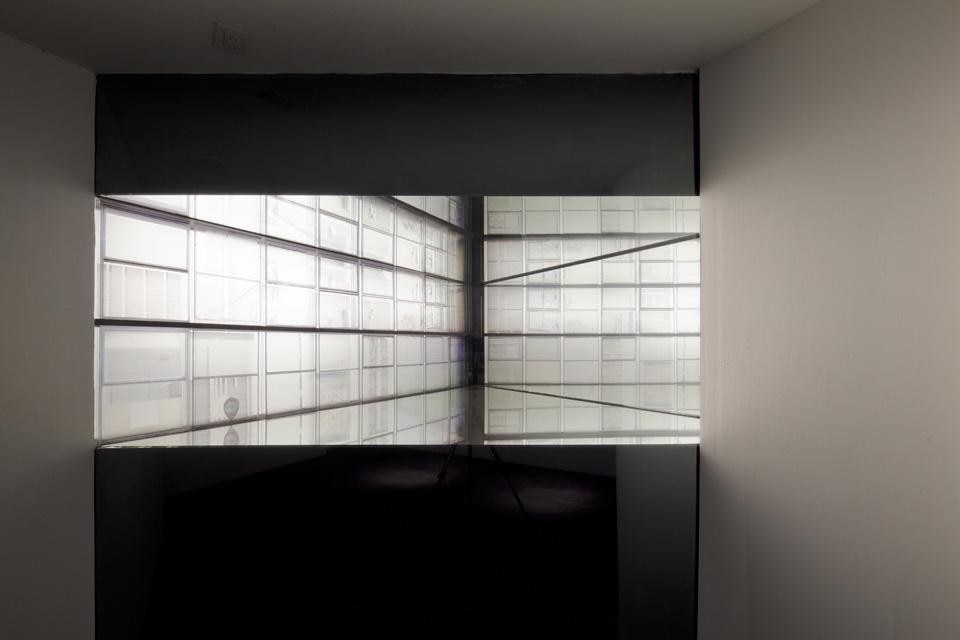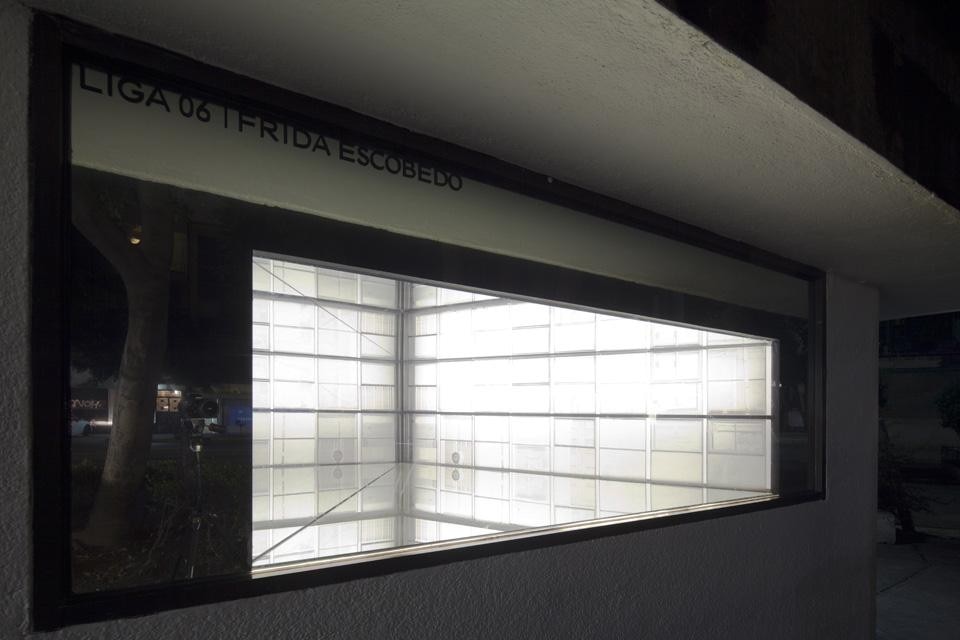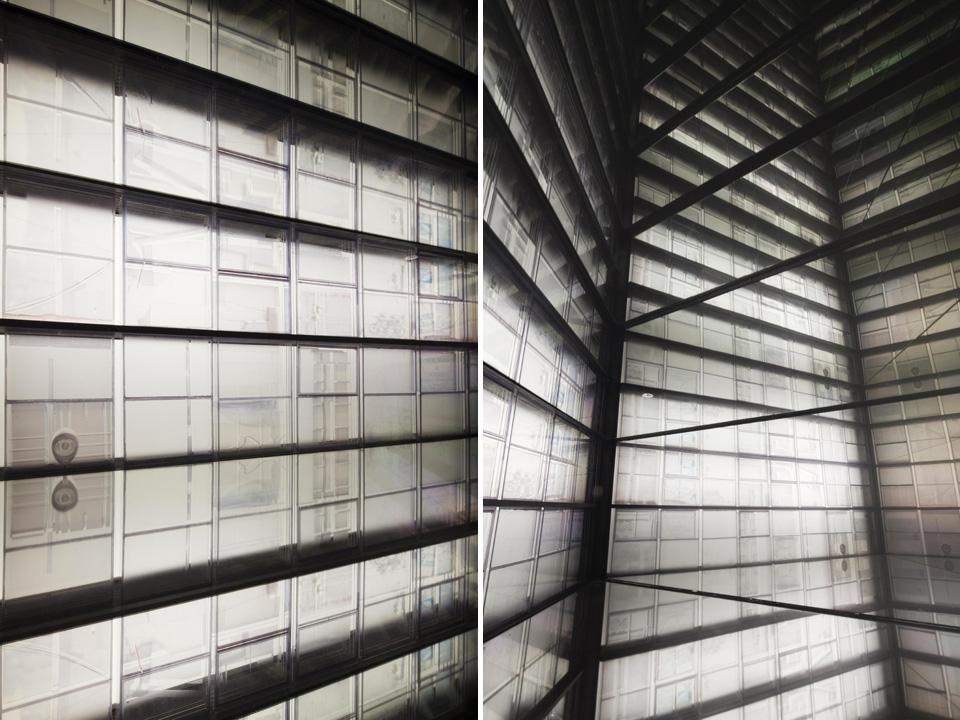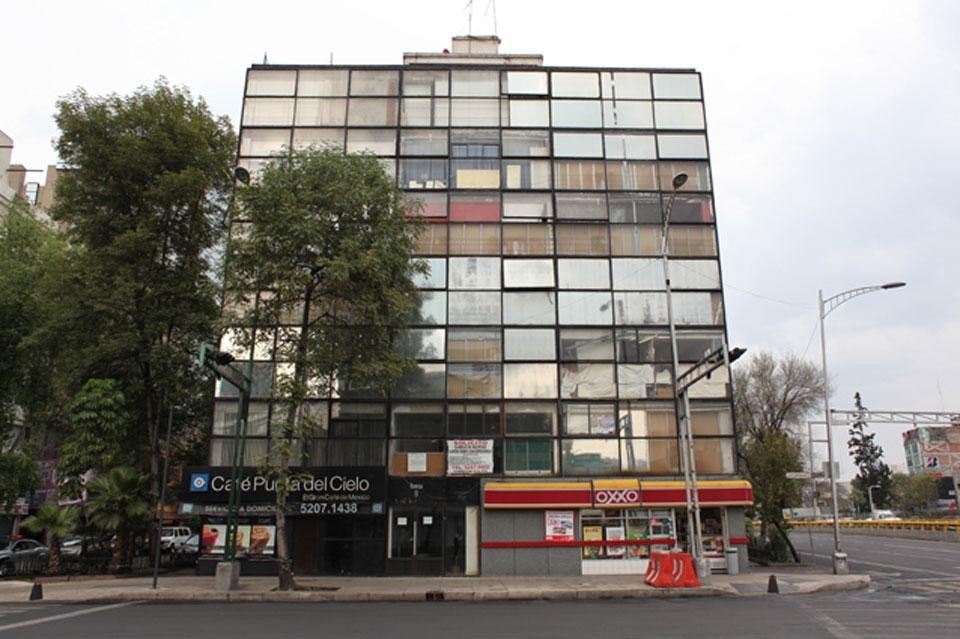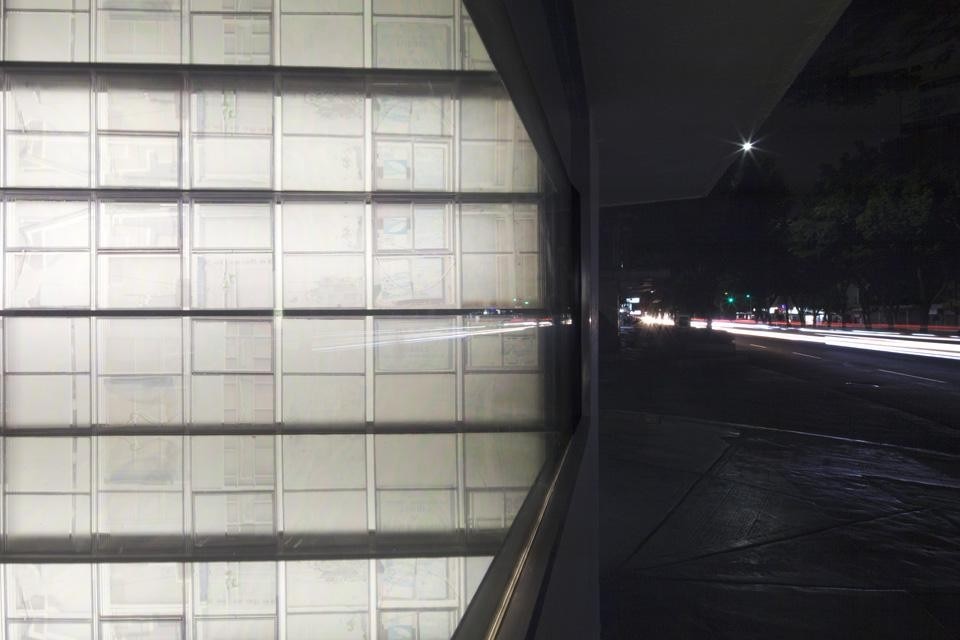When thinking about Frida Escobedo's Split Subject project at LIGA, Smithson's rendering of language as a site of cultural sedimentation came to mind, along with his conception of modernist Park Avenue high-rises as monuments to "evolution in reverse." In the façade of a commercial building in Colonia Juárez, Escobedo discovered a strain of this narrative — one specific to Mexican national identity. Pressed between the building's glass shell and the interior it encloses is a record of an unregulated development and accumulation at odds with the façade's projected vacancy. The face of modern Mexican character, or what grew in the empty recess left by Modernism's failure to deliver what it bespoke, is legible here. The logic of this structure has been populated with the disorder of reality — clarity is met with the scraps of necessity. Looming over the street like a hulking ship of Theseus, this building clearly has a story to unravel. By transposing each of its material layers into a scaled-down slide installation, Escobedo has fittingly treated this surface as a stanza to be deconstructed.
Escobedo has used the written word as an architectural directive before: For the pavilion in El Eco Museum, she approached the space like the spread of a blank page, using only cinder blocks as her structural alphabet: Literal concrete poetry. Whether creating an office space on the roof of a suburban home, erecting an elevated house over an ordinary hillside, or revitalizing a rundown tourist site in Caletilla Beach, Escobedo makes use of disuse and finds significance in the interstices of our lived environment. This seems to come from an equal attention to craft and to practicality, and an ability to compartmentalize needs and desires, all of which she builds into her designs. Escobedo's winning model for an Affordable Housing competition was a unit that could be extended to create porch-like areas, or contracted to form an indoor living room, giving the residents the luxury of modification with the most basic of means. With minimal and modular constructions, Escobedo subtly creates room for leisure, and the resourcefulness in her designs is essentially like that of a poem — lyrically efficient, elegantly spare, and carefully complex.
The windowpanes of Florencia 72, as shown in Escobedo's photographs — some opened at oblique angles, some locked into the grid — act like two-way mirrors. Making up an exterior that reflects and deflects, they remind us that, as Escobedo notes, the formation of a collective, cultural self involves isolating our conceptions of the other: In order to self-identify, we self-differentiate. In their masked transparency, the building's windows recall a work that Escobedo has referenced in past presentations: Marcel Broodthaers' blocked-out "Un Coup de Dés." With this simple gesture, Broodthaers isolated the graphic aspect of Mallarmé's piece, literalizing its visual thesis and illustrating the concept therein: "Rien…n'aura eu lieu…que le lieu." Here, in a similar act of elucidation, Escobedo has taken a pre-existing work and broken down its tiers of content, physically representing each one, word for word. If Florencia 72 seems to materialize a complex history, Escobedo advances this reification further. In so doing, she draws out a certain social legacy hidden in plain view, in order to take a detailed look at what has "taken place." Annie Ochamec
